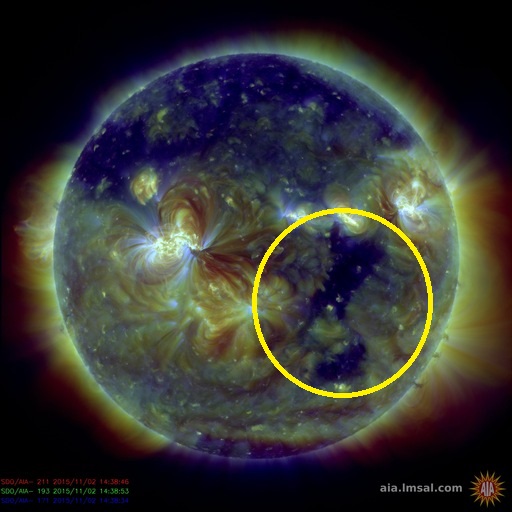Space Weather Alert - 2 November 2015
What Has Happened?
A recurrent trans-equatorial Coronal Hole is currently in an Earth-facing position and the High Speed Stream (HSS) from this Coronal Hole is anticipated to arrive later today. On the previous rotation this HSS produced a significant geomagnetic storm with a peak of STORM G3, and it's likely to reach similar levels this time around. The HSS is expected to remain geoeffective for 24-48 hours before subsiding.
Assuming clear dark skies, there is an increased chance of seeing the aurora over the next couple of evenings. Those in Scotland, northern England and Northern Ireland would be likely to have the best chance, if the weather were to be favourable and if geomagnetic activity levels are as expected.
Sign-up to receive Geomagnetic Disturbance Alert emails.
Follow us on Twitter:
Follow @BGSauroraAlert for more occasional aurora alerts.
Follow @BGSspaceWeather for daily space weather forecasts.
Glossary
- BGS
- The British Geological Survey is one of the Natural Environment Research Council's Research Centres.
- Coronal Hole
- A region in the Sun’s outer atmosphere (corona) where hot material can flow unrestrained by its magnetic fields out into space.
- High Speed Stream
- A fast moving stream of solar wind, responsible for magnetic storms.
- Magnetogram
- The variation, minute by minute, of the strength and direction of the Earth’s magnetic field. Measured in units of nano-Tesla (for the strength of the field) or in degrees (direction of the field).
Solar Wind- The ever-present expansion of the Sun’s hot outer atmosphere into the solar system, which carries space weather within it.


